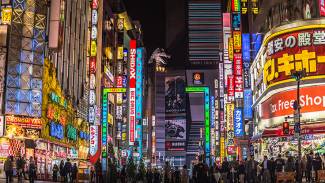HANEDA AIRPORT
FLIGHT OPTIONS INCREASE AHEAD OF OLYMPICS
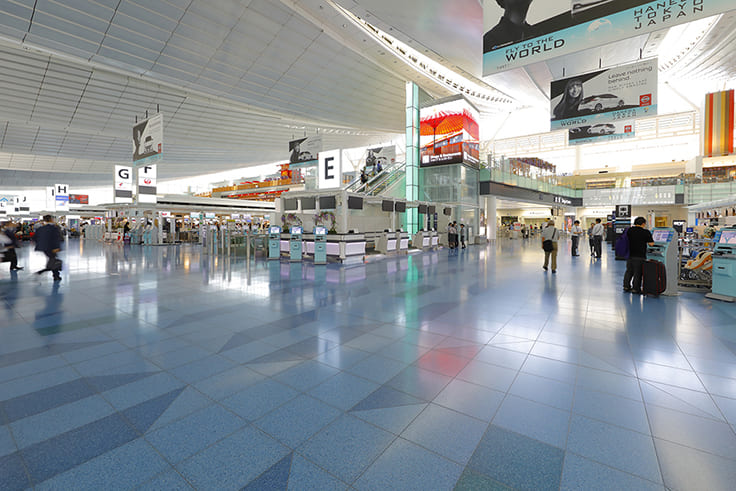
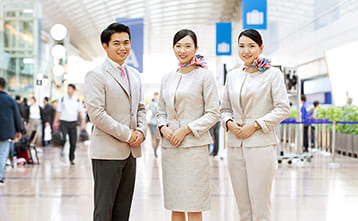
Tokyo’s Haneda Airport is poised to significantly increase the number of international flights using the airport.
In January 2019, in preparation for Tokyo hosting the 2020 Summer Olympics and Paralympics, the government of Japan reached an agreement with the United States on new routes for airplanes using Haneda. This led to the addition of 50 more international flight slots at Haneda and a boost to the number of international flight slots to 130 a day. The expansion will come into effect on March 29, and although it may seem like the beginning of a whole new era for the airport, it’ll in fact be a return to its roots.
Benefit from its proximity to Tokyo
Before 1978, Haneda was actually Japan’s primary international airport before almost all of its global flights were moved to Narita Airport. It wasn’t until 2010 and the construction of their fourth runway, Runway D, that international flights returned to Haneda, which in the meantime had built an impressive network of domestic flights, connecting the capital with 48 cities across Japan. That, combined with its central location, as Haneda is located only 15 kilometers from Tokyo’s city center, has made it a key element in the government’s plan to boost the number of international flights to and from Japan. It’s also why the current expansion looks beyond the upcoming Olympics.
In 2019, around 30 million tourists visited Japan, and the Japanese government’s target increase for visitors is to go as high as 40 million in 2020 and around 60 million visitors in the year 2030. The 50 more international flight slots are the first step toward handling that influx. Nearly half of them, 24 to be exact, will be between Japan and cities across the U.S. such as Atlanta, Denver, Dallas, Detroit, New York, Washington, D.C., Houston, Portland, San Jose, Seattle and more. Seven of the routes will be brand-new direct connections between Japan and Russia, India, Turkey, Italy, Sweden, Finland and Denmark. Finally, some of the additional flights will also connect Japan and China. Altogether, they will account for 39,000 more international flights at Haneda a year, for a total of 99,000, servicing about 25 million passengers.
More flights from Haneda to the U.S.
Some of the airlines that will benefit the most from this boost include major U.S. carrier Delta Air Lines, All Nippon Airways (ANA) and Japan Airlines (JAL). Delta will actually move all of its operations from Narita to Haneda while JAL will do so with nine slots, while increasing their international connections from 22 to 34. ANA will see an even bigger uptick. With an added 14 slots, ANA will now have 49 slots per day, including six new ones to the U.S. The expansion will also see ANA fly to Shenzhen and Istanbul for the very first time.
All of this has been made possible by allowing carriers to fly directly over Tokyo’s airspace, which has raised some concerns about possible noise pollution and falling objects. Fortunately, efforts have been made to address that issue. The new routes will not be in operation over the city 24 hours a day. Instead, in the event of a south wind, which blows about 40 percent of the year, the additional flights will fly over large portions of Tokyo between 3 and 7 p.m. In the event of a north wind, the new flights will be redirected to cover a smaller portion of Japan’s capital, mostly over the areas facing Tokyo Bay, and will only operate between 7 and 11:30 a.m. and again between 3 and 7 p.m. Noise reduction will also be helped by, for example, raising the altitude of the point where an airplane starts to descend for landing.
In return for any inconveniences, Tokyo and possibly the rest of Japan will see many economic and cultural benefits from an increase of international passengers, especially if they take advantage of Haneda’s domestic connections to visit cities across the country. Another benefit of Haneda becoming Japan’s leading hub airport is its convenient network of public transport, although that too will undergo change in the wake of the current expansion.
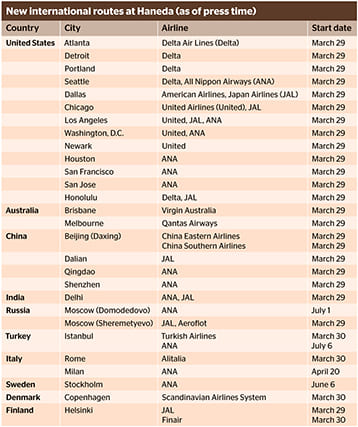
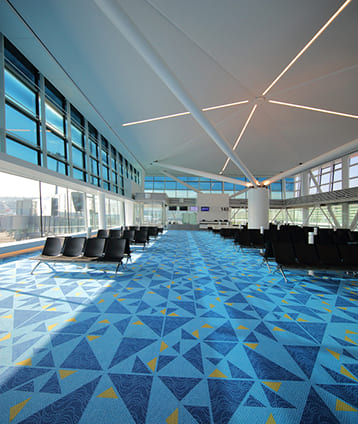
Two terminals for international flights
Up until now, Haneda was accessible via three train stops: the domestic terminals 1 and 2, and the International Terminal. However, to accommodate the 50 more international flight slots, parts of Terminal 2 will be dedicated to handling international flights as well. To make the nomenclature a little clearer, it was decided that the International Terminal should be renamed “Terminal 3” on March 14. Passengers who have used Haneda for decades may need a little time to get used to the idea of taking an international flight from Terminal 2. But those changing between international and domestic flights will appreciate how smooth the process will become since it will all take place in the same building.
New technologies help processes
The new Terminal 2 will also offer other kinds of perks, including shorter waiting times. Upgrades such as Smart Lane allow up to four people prepared to be able to use the baggage screening lanes at the security check to shorten the whole process. The One ID system will serve a similar purpose.
According to Tatsushi Hirata, senior manager in charge of corporate planning for the Tokyo International Air Terminal Corporation (TIAT), which manages Haneda’s international terminals, One ID may be implemented sometime during the first half of the year. It’s a face recognition system that will be used together with a passport photo. Right now, passengers have to constantly show their ID at check-in, security, immigration or at the boarding gate. However, by scanning their ID and face just once at check-in points, people will be able to effectively board their plane document-free, not having to take out their passport and other paperwork at every turn. ID checks will still be performed at immigration, but the system should allow for a smoother flow of passengers through the airport.
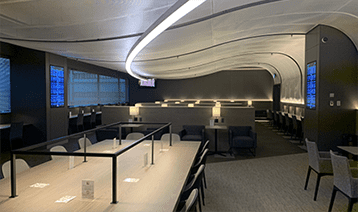
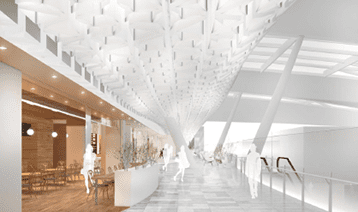
New facilities at terminals 2 and 3
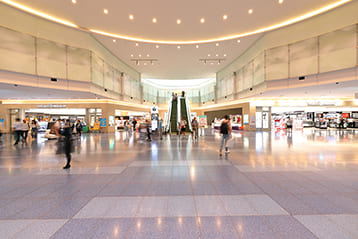
Terminal 2 will also offer duty-free shopping opportunities. Haneda’s central duty-free shop at Terminal 3 is the largest establishment of its kind in Japan, and the one in the expanded Terminal 2 should be comparable to that, Hirata explained. The duty-free shopping area at Terminal 2’s arrivals area, on the other hand, will be about three times as big as the one at Terminal 3. But that doesn’t mean that Terminal 3 will only undergo a name change and then be completely forgotten. In fact, major renovation work totaling ¥22 billion has been carried out at the old International Terminal, including expanding its check-in area, constructing new luggage carousels at the arrival lobby and other improvements.
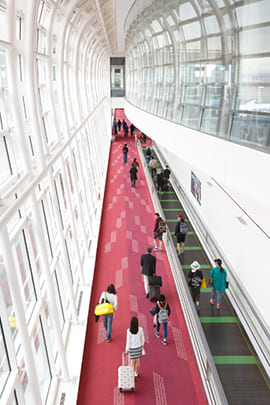
Of course, the influx of international travelers has required Haneda to expand their multilingual support. Right now, the airport offers signs in Japanese, English, simplified Chinese and Korean. While they naturally deal with passengers from all over the world, it’s impossible to construct signage in every language, but there are a few smartphone apps offered by outside parties that can help travelers with translations. In the end, though, whatever the challenge may be, Haneda is sure to handle it. Despite already handling 450,000 flights a year — a number expected to reach about 490,000 with the expansion — and being one of the busiest airports in the world, it’s been awarded the highest score of five stars by the airport review and ranking site Skytrax for six years in a row. This puts Haneda in the same company as Munich Airport, South Korea’s Incheon International Airport, Hong Kong International Airport and Singapore’s Changi Airport. Haneda is also continuously ranked as one of the cleanest airports in the world and has received praise for their treatment of elderly and disabled passengers, making it all the more worthy of the title of Japan’s leading hub airport.
EXPANSION TO BENEFIT INFLUX OF TRAVELERS
Sponsored content
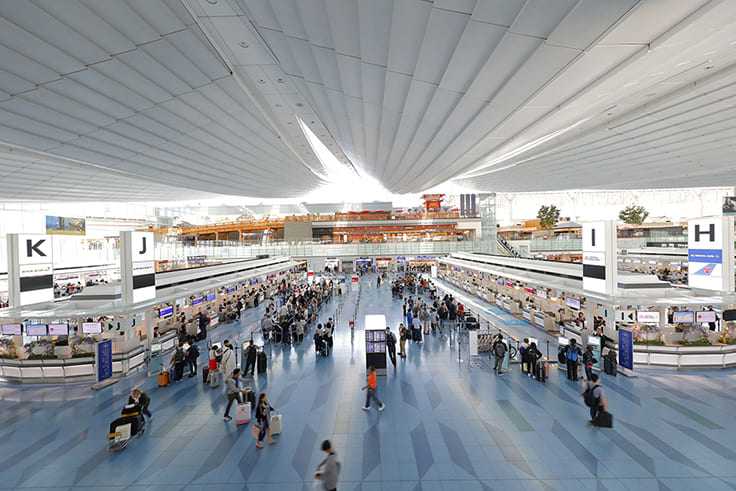
From March 29, part of Terminal 2 at Tokyo’s Haneda Airport, which up until now was used only for domestic routes, will begin to handle new international flights. To avoid confusion, prior to the start date of Terminal 2 taking on the new flights, the current International Terminal was renamed “Terminal 3” on March 14.
With 50 new slots, the new international flights will significantly boost Haneda’s capacity, allowing it to accommodate more flights and direct routes between it and cities across the U.S., as well as Russia, India, Turkey, Italy, Sweden, Finland and Denmark. As a result, Haneda will become a global airport hub. This also means Tokyo will have a dual airport hub, along with Narita. “It just makes sense from an economic, cultural and human point of view,” said Tatsushi Hirata, senior manager in charge of corporate planning for the Tokyo International Air Terminal Corporation, which manages Haneda.
“When you look at most major airports, they’re located a bit far from city centers. In London and Paris, it’s 24 kilometers. Incheon is located nearly 50 kilometers from Seoul. Narita itself is about 50 kilometers from Tokyo. But Haneda is 15 kilometers. … Having a second international airport closer to the city center is very beneficial,” especially with the impending influx of tourists that will be arriving in Japan in 2020. But Japanese travelers are also poised to benefit from the expansion.
“At Haneda we have 48 (domestic flight routes),” Hirata said. “By combining that with new direct international flights … people living all over Japan will be able to change at Haneda to travel abroad.”
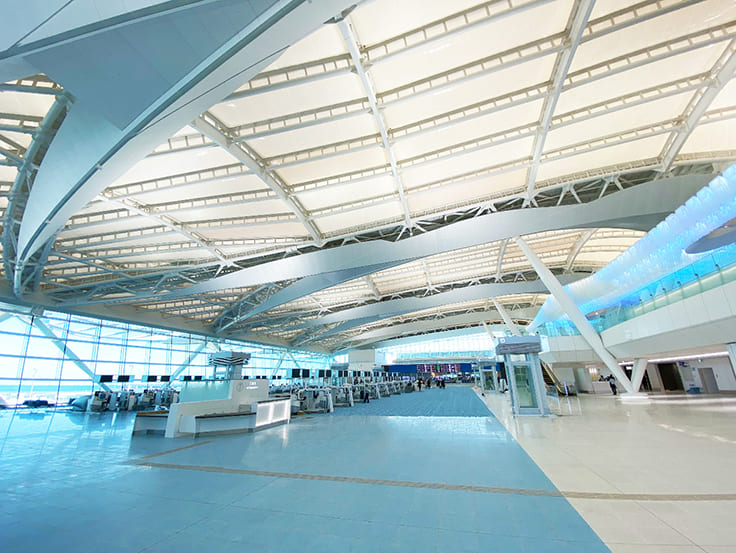
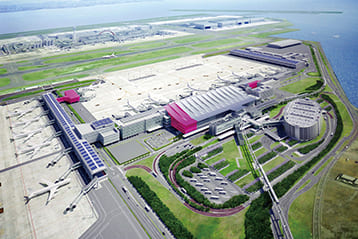
Some might ask why not build a whole new terminal to handle the increased volume of people instead of expanding the duties of Terminal 2, but according to Hirata, such a project would take 10 to 15 years, missing the start of major events by at least a decade. There are also concrete benefits to having domestic and international flights operate out of the same building. “Before now, the minimum transfer time between a domestic and international line was 70 minutes. But thanks to having them both operate out of Terminal 2, that time will go down to only 55 minutes. It will also be easier to have those transfers occur on the same day.”
Even so, the entire expansion has been a huge undertaking. Terminal 2’s renovations alone cost approximately ¥62 billion, required coordinated efforts from numerous parties and left little room for error. “Construction could run a little longer here and there, but the start of the major sporting events are set in stone.” But if anyone could do it, it’s Haneda Airport. After all, they have a history of doing a lot with a little.
“Haneda is very compact. It’s very small,” Hirata said. That’s why Haneda will also be implementing the Fast Travel program to help traffic move more smoothly through the airport.
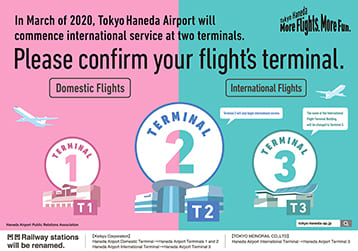
“One of the ways we’ll deal with lines and other issues is a self-baggage drop system where people will automatically check their bags themselves,” Hirata said. “Another way Haneda will fight congestion is the Smart Lane, which is actually already operating in parts of Terminal 3. … With Smart Lane, up to four people at once can be prepared to use the baggage screening lanes at the security check to shorten the whole process. This will vastly reduce waiting times. We are planning to implement 10 Smart Lanes total at Terminal 2.” The airport will additionally utilize the One ID biometric identification system to help improve boarding times and more. Demonstrative testing of this system will begin in June.
With Terminal 2 soon accommodating both domestic and international flights from March 29, travelers should be aware that Haneda will have two international terminals. It would be best to make sure of one’s correct terminal before heading to Haneda.
All double-confirmations aside, all future passengers have to do now is enjoy these various upgrades.
GOODBYE BORING LAYOVERS, HELLO INNOVATION
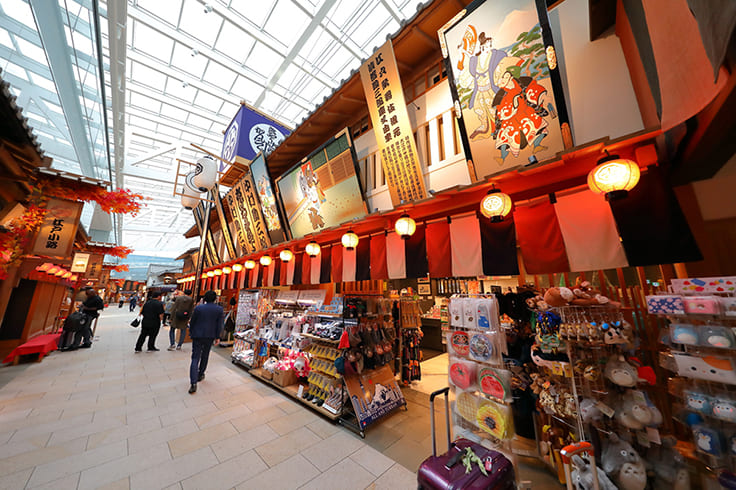
Haneda Airport’s transformation into an important hub for international travel is bringing not only a more global array of travelers to the airport, but also creating a new segment of users — passengers with long layovers for connecting flights.
Spending hours in an airport is likely not on the top of most people’s travel wish list, but thanks to recent and upcoming developments, Haneda Airport can make a strong case that a layover here can be something to look forward to.
Shop and eat, eat and shop: these are often the only two options for entertainment at an airport. While Haneda offers plenty for the palate and a diverse array of souvenir and duty-free shops, there is a wealth of other options, from a planetarium and flight simulators, to a half-scale reproduction of a famous historical bridge and a commercial area built to resemble a samurai-era Tokyo street.
Travelers on overnight layovers will be glad for the Royal Park Hotel, which is directly connected to the airport’s Terminal 3 (until recently called the international terminal), and offers free shuttles to terminals 1 and 2. In addition to comfortable guest rooms, a restaurant and bar, the Royal Park also manages the Transit Hotel inside the international departure area, which has a lounge and private rooms with and without beds that can be paid for by the hour.
Edo Koji is only on the fourth floor of Terminal 3, but it is a world away from the bustling modern transport hub. Modeled after a typical street in Edo (Tokyo’s name until 1868), expert builders and artistic consultants were brought in to help make the architecture as authentic as possible. This exquisite corner of the airport is not just for looking, however. There are numerous shops selling wares both traditional and modern, as well as a variety of restaurants offering everything from sushi and sukiyaki to tempura and teishoku set meals.
The trip back into old Japan continues on the fifth floor with the Haneda Nihonbashi Bridge, a replica of the famous span in the mercantile district of old Edo; a display of precious folding screens from the National Museum of Japanese History and Festival Plaza, which is decorated to evoke the feel of a typical matsuri festival.

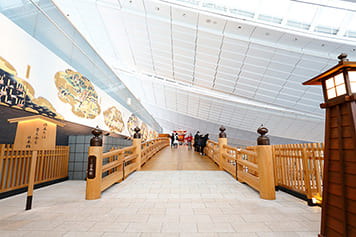
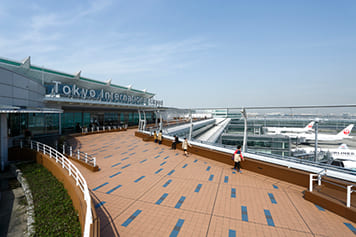
The fifth floor is as good a place as any to return to the 21st century. The Tiat Sky Road has a display of models of the airplanes that fly in and out of Haneda every day, as well as four flight simulators for anyone curious about what it feels like to pilot one of them. Continuing on down Sky Road leads to the Observation Deck, where the sights, sounds and smells of modern air travel can be experienced up close. Digital displays provide information on the complex ballet of machinery and technology going on below.
Outside of the airport the opportunities for adventure are nearly endless, given Haneda’s proximity to Tokyo proper. Shinagawa Station, one of Tokyo’s major transportation hubs, is less than 20 minutes by train from Terminal 3. Stations along the way, such as Omorimachi or Keikyu-Kamata, provide opportunities for exploring typical neighborhoods where Tokyoites live, work and play.
Connected to a train stop next to Terminal 3 Station is Haneda Innovation City, an ambitious project that is opening in part in July 2020. HI City will feature an incredibly diverse array of functions and facilities on a 5.9-hectare plot about a kilometer from Terminal 3. While it would be unrealistic to describe every single part of this vast endeavor, the complex is broadly divided into cutting-edge industries and cultural spheres. The former includes a medical research and development base, mobility center for testing autonomous driving technologies and a conference and training center, with the latter having an Artist Village, 3,000-person capacity performance hall and an art and technology center.
Whether it is just for a few hours, an overnight stay or even a special trip out to Haneda to see all that has been built, there is something for everyone at the airport. Expect the attractions to continue to grow as Haneda Airport takes on an even more vital role in global travel through Japan’s capital city.




